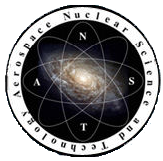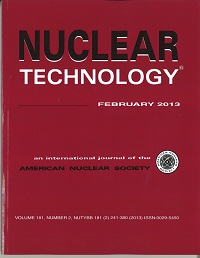On federal investment in Small Modular Reactor technology
Taxpayers for Common Sense on February 27 issued a press release targeting the Department of Energy for "wasting more than half a billion dollars" on its small modular reactor (SMR) development cost-sharing program. Leaving aside the historically essential role of government investment in developing, advancing, and bringing to market innovative energy technologies-and the fact that early government investments in nuclear energy technology now pay back enormous dividends to all Americans in billions of dollars' worth of affordable and emission-free electricity generation every year-many of the advantages of advanced SMR energy technologies were overlooked or misconstrued in the group's press release and policy brief.


 Refueling optimism
Refueling optimism

 Owners of the (556 MW) Kewaunee nuclear plant in Wisconsin
Owners of the (556 MW) Kewaunee nuclear plant in Wisconsin  Cassini-Huygens is a Flagship-class NASA-ESA-ASI robotic spacecraft sent to the Saturn system. It has studied the planet and its many natural satellites since its arrival there in 2004, as well as observing Jupiter and the Heliosphere, and testing the theory of relativity. Launched in 1997 after nearly two decades of gestation, it includes a Saturn orbiter Cassini and an atmospheric probe/lander Huygens that landed in 2005 on the moon Titan. Cassini is the fourth space probe to visit Saturn and the first to enter orbit, and its mission is ongoing as of 2013. It is powered by a plutonium power source, and has facilitated many landmark scientific discoveries in its mission to the stars.
Cassini-Huygens is a Flagship-class NASA-ESA-ASI robotic spacecraft sent to the Saturn system. It has studied the planet and its many natural satellites since its arrival there in 2004, as well as observing Jupiter and the Heliosphere, and testing the theory of relativity. Launched in 1997 after nearly two decades of gestation, it includes a Saturn orbiter Cassini and an atmospheric probe/lander Huygens that landed in 2005 on the moon Titan. Cassini is the fourth space probe to visit Saturn and the first to enter orbit, and its mission is ongoing as of 2013. It is powered by a plutonium power source, and has facilitated many landmark scientific discoveries in its mission to the stars.
 Significant discussions have occurred recently on various internet venues about "load following"-that is, the capability of a generating source to adjust its power output to match variable demands. There is a myth spreading that nuclear power plants cannot load follow, and today's ever-changing discussion about low-GHG generating sources demands that this myth be dispelled.
Significant discussions have occurred recently on various internet venues about "load following"-that is, the capability of a generating source to adjust its power output to match variable demands. There is a myth spreading that nuclear power plants cannot load follow, and today's ever-changing discussion about low-GHG generating sources demands that this myth be dispelled.
